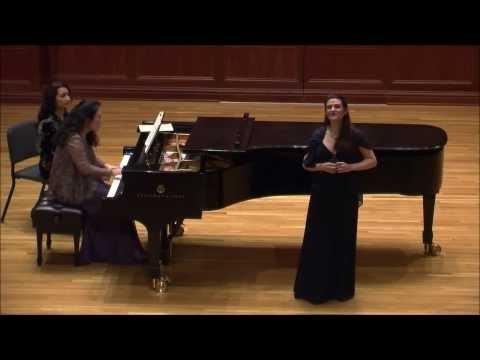English Press
Mozart's Mass in C Minor with Master Chorale of South Florida
The star of the consistently fine solo quartet was Robin Johannsen. This American soprano has sung at major European opera houses and recorded with top period performance specialists. In the aria “Et incarnatus est,” one of Mozart’s most sublime melodies, Johannsen’s dexterity and agility was fully in evidence but she offered welcome restraint and attention to the text’s spiritual cast. The duet “Domine Deus” with mezzo-soprano Clara Osowski radiated charm, buttressed by the stellar musicianship and contrasting timbres of the vocalists.
Lawrence Budmen, South Florida Classical Review, April 6, 2024
Baroque Christmas ~ Handel and Bach conducted by Jonathan Cohen with the Handel & Haydn Society
"For true musical athleticism, one needed to wait a spell for soprano Robin Johannsen, who was the featured soloist in a pair of works by George Frideric Handel plus J. S. Bach’s Cantata No. 51 “Jauchzet Gott in allen Landen.” By just about any measure, Johannsen is an exceptional singer: for warmth and beauty of tone, evenness of projection, clarity of articulation, and lightness of touch, she leaves little to be desired.
In Handel’s Silete venti she drew impressively on all those qualities, particularly in the closing pair of arias with their energetic and sometimes stormy melismas. But Johannsen’s singing wasn’t just about showing off. She shaped the end of the opening recitative with enchanting clarity and engaged in a series of lilting exchanges with the orchestra in the first aria, “Dulcis amor.”
Jonathan Blumhofer, Boston Classical Review.com, December 16, 2022
international press
Graupners Dido, Königin von Carthago ~ ML: Andrea Marcon, Regie: Deda Cristina Colonna (Amsterdam, Basel, Innsbrucker Festwochen der Alten Musik)
Die Sopranistin Robin Johannsen durchlebt in Innsbruck als Titelheldin alle Stationen einer emotionalen und mentalen
Achterbahnfahrt. Als ihr dämmert, dass ihr in latinische Gefilde abdriftender Lover meineidig „von hinnen“ eilen will,
läuft sie mit zackig-wilden Koloraturen zu furioser Form auf, steigert sich in suizidales Rasen und zelebriert endlich ihren
Schmerz in einer erschütternden Klage, deren herzerweichendes, in einen fatalen Dominantsekundakkord geführtes Anfangsmotif
wieder neu intoniert wird. Zwischendurch rütteln die Streicher an der Gesangslinie,setzen klotzige, durch schroffe Pausen getrennte
Akkorde dagegen, lassen die irrlichternde Stimme phasenweise ganz allein, um sich dann sacht unter ihre höhersteigende Kantilene zu tasten.
Ergreifender kann versteinernde Trauer nicht in Töne gefasst werden.
Werner M. Grimmel, Frankfurter Allgemeine Zeitung, August 31, 2024


Tatjana_Dachsel-4.jpg)
Tatjana_Dachsel.jpg)